February 26, 2017
Yamuna River Project Presentation Video
Video presentation of the Yamuna River Project, the interdisciplinary pan-university research project of the rejuvenation of the Yamuna river and its opening to the city of Delhi.
News
Recent Events
1/19/2021
Phase Two Research to Begin at Tulane University
New Orleans, Louisiana
12/20/2020
Rajasthan Cities Project: Jaipur Wins Architect Magazine’s Studio Prize
Charlottesville, Virginia
9/11/2020
Productive Urbanism Conference
Valenica, Spain
3/7/2020
Iñaki Alday and Pankaj Vir Gupta Article Featured in Arquine Magazine
Mexico City, Mexico
12/17/2019
YRP Studio Final Review
405 Campbell Hall, UVa
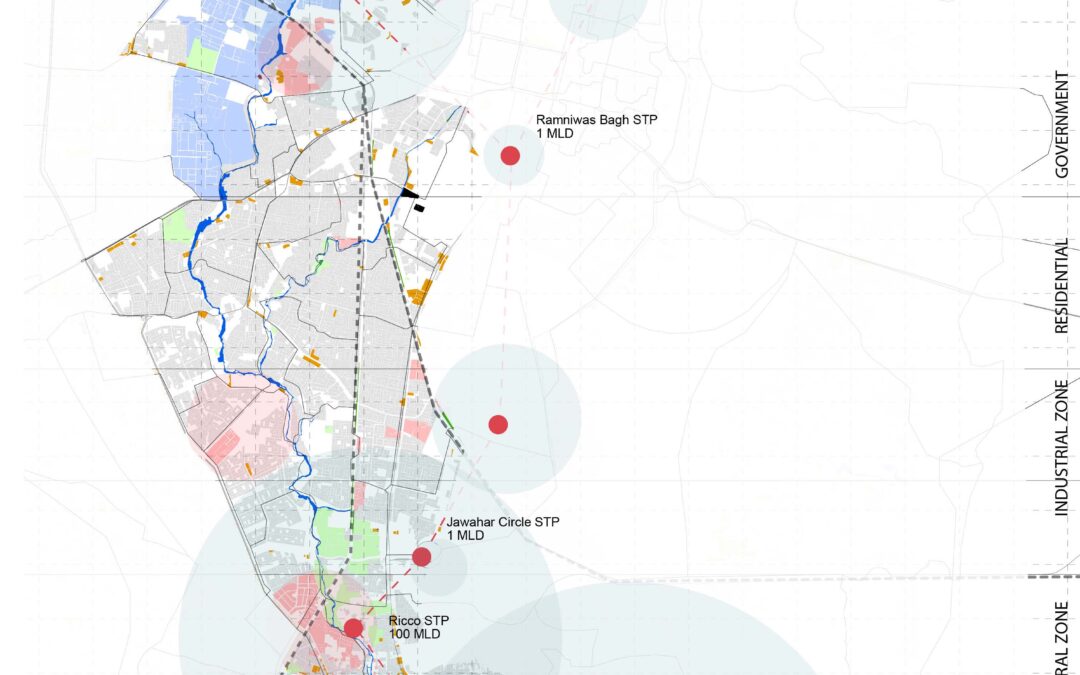
New Connection Green Corridor in the Amanisha Nala Subdrain // Fenghua Lin
This project looks at the subdrain of the Amaanish Nala, it proposes a green corridor for the city to connect both citizens and nature, and also a mobility trail for people to travel in with. The project also envisions the corridor to finish in different phases, first...
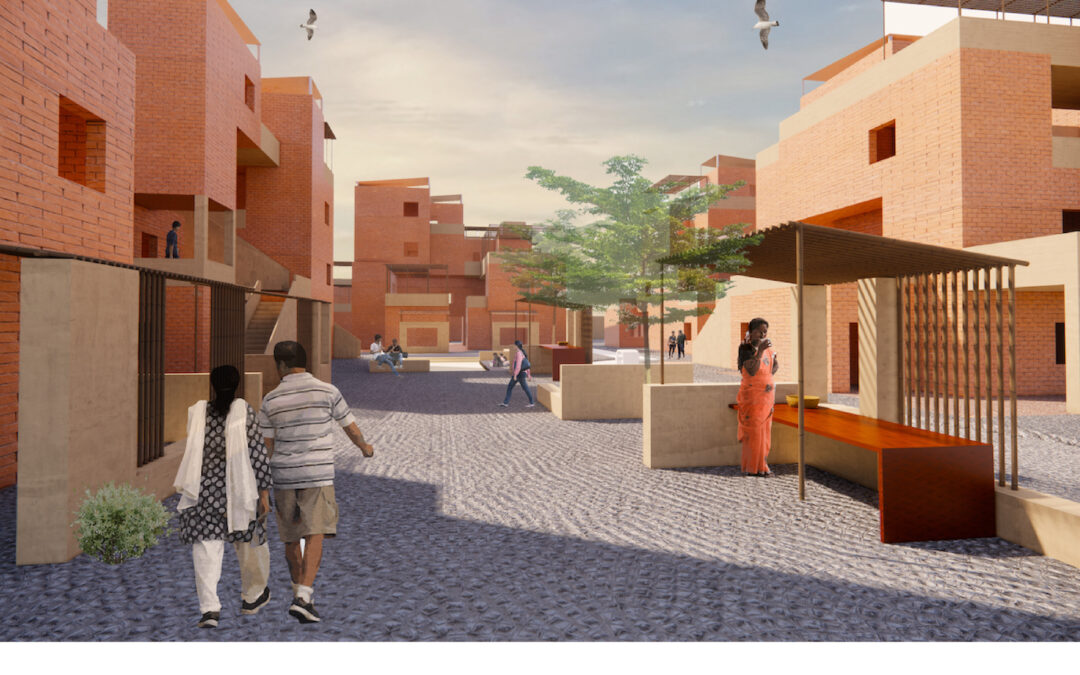
Slum Neighborhood Intervention in Jaipur // Kayla Murray & Zihe Ye
Jaipur faces a serious housing and infrastructure crisis, especially for those living in informal housing settlements, or slums as they are more commonly known by.The large slum areas in east Jaipur face problems of inaccessible transportation, basic amenities, and...
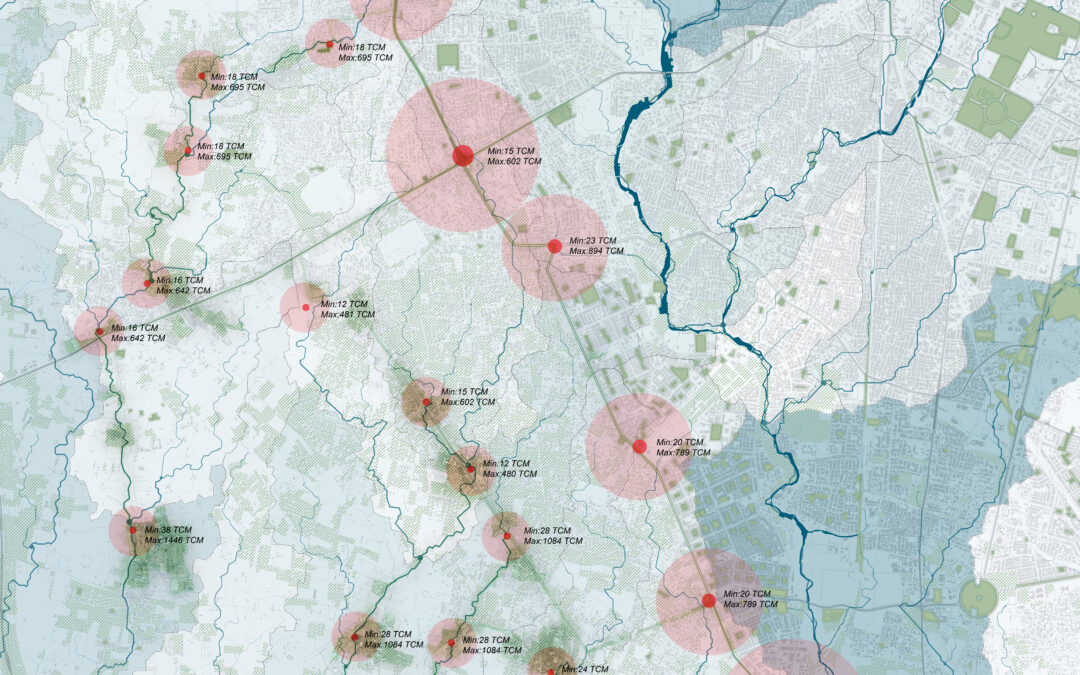
Reinterpreting Jaipur’s Urban + Agricultural Edge // Fanke Su, Oliver Church & Joonas Castren
Our project is an investigation of Jaipur’s urban-rural edge. We began by cataloging and analyzing the existing spatial conditions of this boundary. As revealed in our mapping ,we realized that the North-South oriented NH-52 acts as a hard separator of the urban...
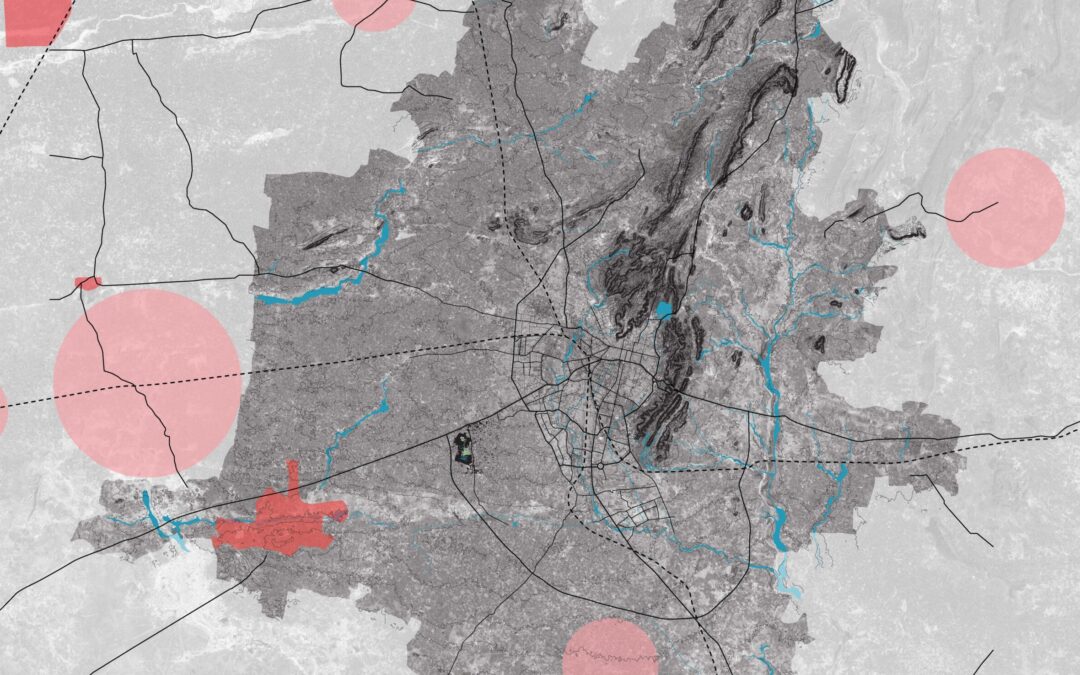
Bhakrota Watershed Park // Sean Fowler
The Bhakrota Watershed Park is a response to the climate crisis in Jaipur, Rajasthan, India.Drought conditions in the region, a growing population and continued urbanization have taxed the water system to the point almost a third of the city’s water needs are not met,...
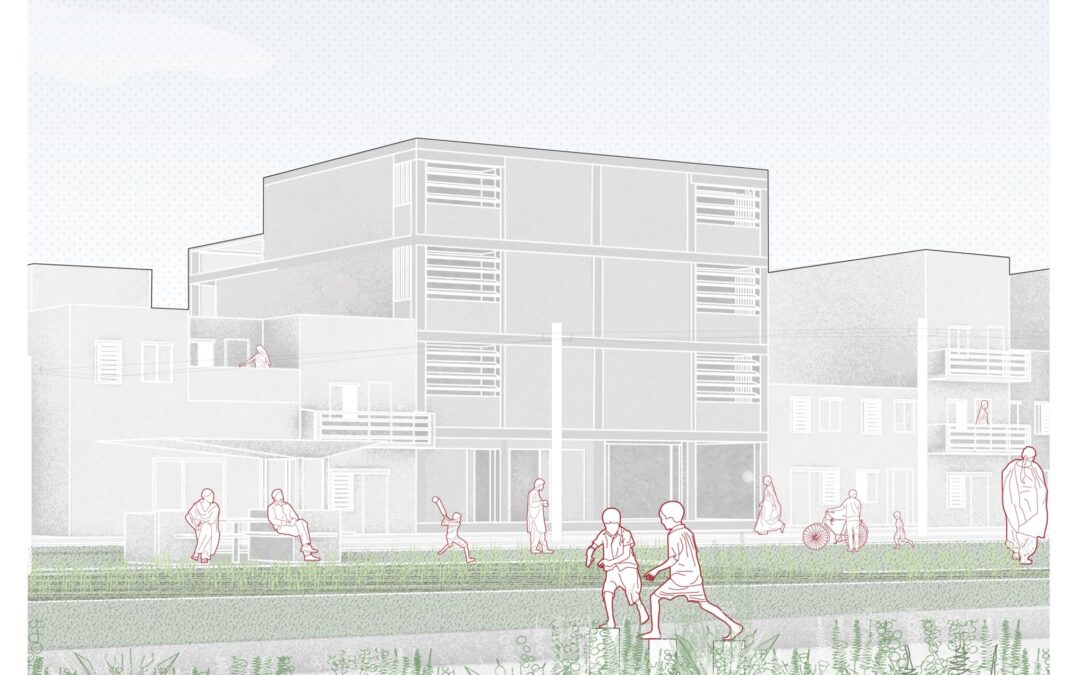
Kartarpura Ganda Nallah Revitalization // Quinn Kelsey, Megan Spoor
Once a river, the Kartarpura Ganda Nallah is now a drain, a consequence of Jaipur's depleting water supply and insufficient solid waste management infrastructure. Houses encroach dangerously on the banks of this heavily polluted water, with hundreds of homes flooding...
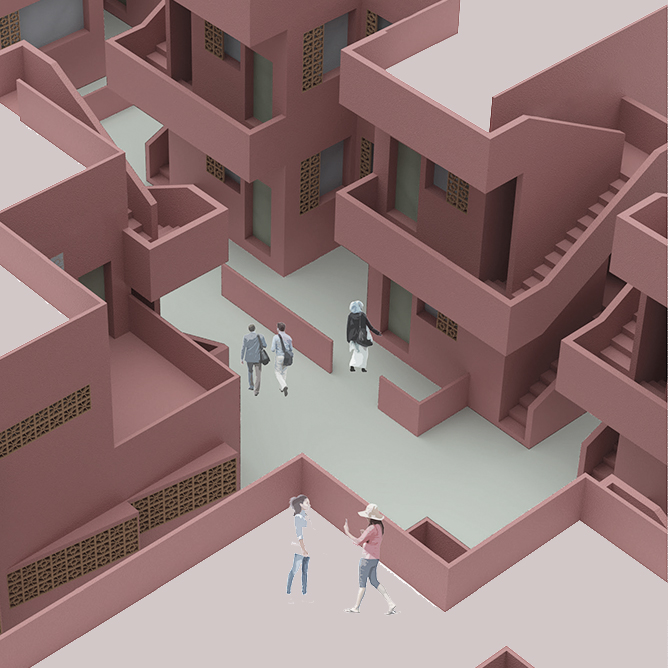
Re-envisioning railroad corridors as new neighborhoods// Bhumika Shirole
In the Lutyens’ area in New Delhi, the railway tracks run parallel to the Yamuna and act as a divider between the city and the river. On the west lie the government capital, public amenities, commercial activity, historic monuments and parks along with cultural...

Cooperative affordable housing and community amenities // Nick George
The current estimated need for housing in the capital city of Delhi, India is approximately 2.3 million dwelling units. Within portions of the city, especially in the neighborhoods of Nilothi and Hastsal, the need for housing is exacerbated by the lack of sufficient...
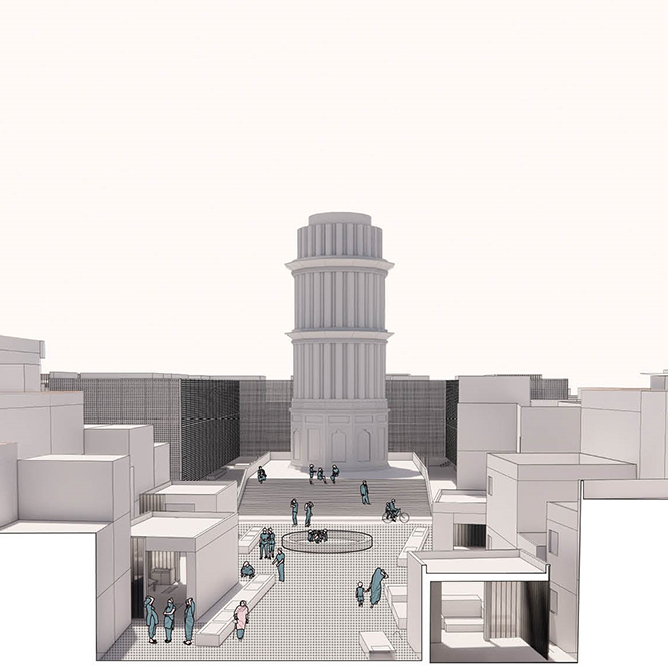
Recovery of Hasthal Minar as public heritage site // Kareem Elsandouby
The Hastsal Minar is a Mughal-era monument, built by Shah Jahan in the early 17th century. Referred to as a “mini Qutub Minar”, the physical condition and historical conservation of the Hastal Minar could not be more different from its namesake in Mehrauli. Today,...
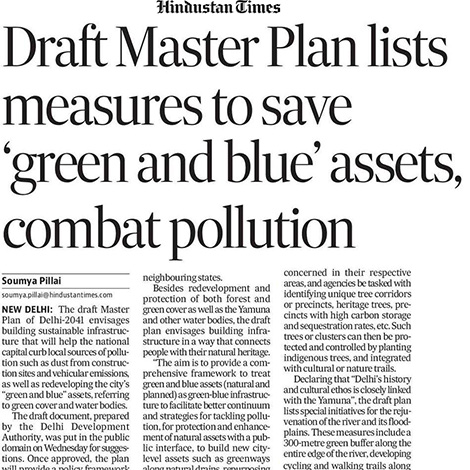
New Delhi 2041 Master Plan YRP Framework
The Yamuna River Project (YRP)—founded at the University of Virginia in 2013 and a partnership between UVa and Tulane University School of Architecture since 2019—is pleased to have contributed to the adoption of a “blue-green” approach as the baseline ecological plan...
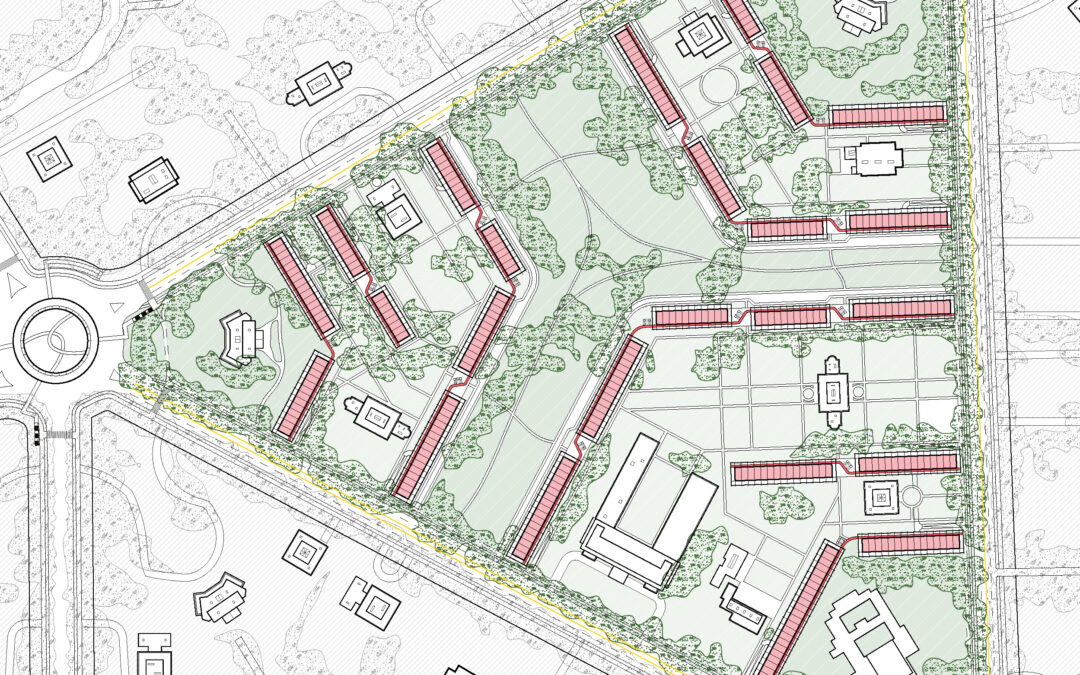
Democratization of Lutyen’s Delhi: The Block // Zachary Braaten
The Rajpath and Lutyens Bungalow Zone (LBZ) form the heart of New Delhi and India’s national government. A multitude of national monuments, and high quality outdoor spaces, and government offices draw a daily mass of humanity to Rajpath. Meanwhile, the publicly-owned...
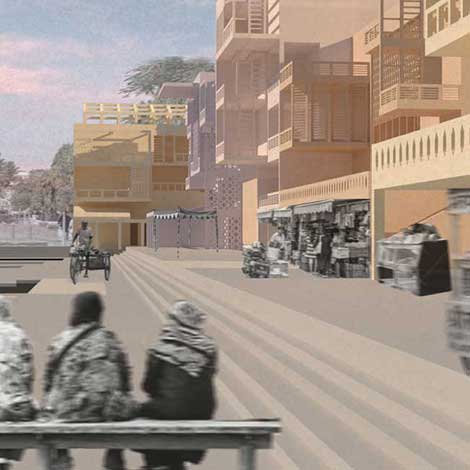
Reviving Tal Katora // Elisabeth Liberatore
Elisabeth Liberatore // Fall 2020. This project aims to revitalize and reconnect residents and tourists alike to one of Jaipur’s most iconic and historic bodies of water, Tal Katora. Centuries of rapid urbanization resulted in what once was a vibrant lake that hosted aquatic life and many visitors diminished to an open dumping site for waste and a murky eyesore in central Jaipur. The surrounding residential buildings reflect Tal Katora’s tarnished state, devoid of any opportunity to engage with the surroundings and the natural beauty Jaipur has to offer. Through building modifications at the ground floor, units, and rooftops, restructure of the wastewater infrastructure, use of plant life for phytoremediation, and creation of a stepped public walkway, Tal Katora will be restored to its glory and serve as a place of gathering, relaxation, commerce, tourism, reflection, and recreation for residents and visitors to foster a deeper connection and appreciation for the history, culture, and landscape of Jaipur.
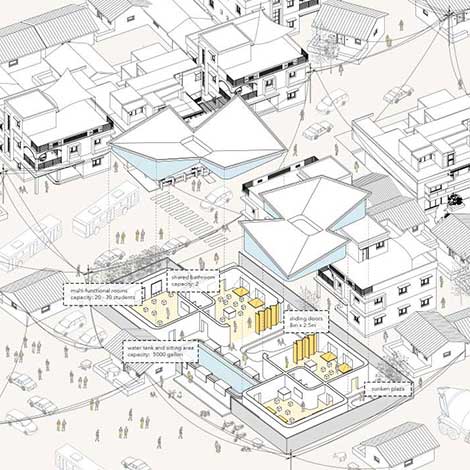
Sail of Dreams – Modularized Educational Facilities // Nancy Wang
Nancy Wang // Fall 2020. Jaipur, as a city in India, has relatively lower literacy rates than the average national record, especially for the area our project is focusing on. Furthermore, this area has high dropout rates in the lower level schools. Therefore, it is important and reasonable to create a typology for primary schools in the city of Jaipur that allows schools to be built any place needed. My ambition is to create a new space-site relationship and to establish pluralistic and balanced study-life space. Starting with small modules, I developed three indoor room collections and 4 outdoor space collections to fill the sites of different scales. My project aims to find the best way to localize a safe but convenient primary school for the community. It involves multipurpose spaces that provide educational assistance for not only students but also teachers. At the same time, the project takes the energy efficiency into consideration by using a sloped rooftop to collect rainwater and store it underground for future use.
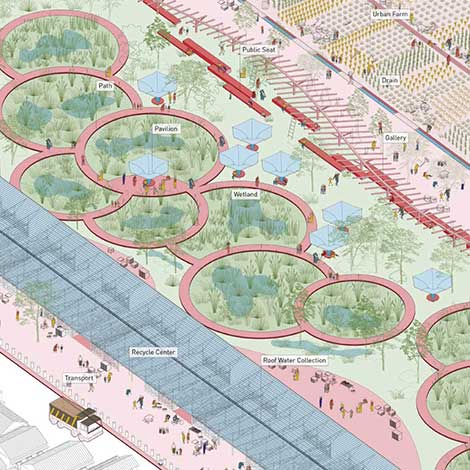
Green Convergence: Resilient Corridor for Jaipur // Xuefei Yang + Chaoming Li
Chaoming Li + Xuefei Yang // Fall 2020. Jaipur, the capital and the largest city of the Indian state of Rajasthan, has faced many of the problems associated with population growth in its rapid development, such as water shortages, untreated sewage and heavy solid waste pollution. The site we are working with is along Mount Rd, an important road between Aravalli Hills and slums, connecting the northern and southern part of the city. By creating an ecological corridor with a circulatory system for both water and waste, we collect and decentralize solidwaste and waste water from the surrounding slums, including creating rain gardens to collect and purify runoff, establishing underground sewage system to reuse, building infrastructures to meet residents daily needs, etc. Upon enhancing city resiliency through combining different system into one and increasing area of green space, we also consider its potential economic value, such as tourism and food production, which is also one of the biggest potential focal points of Jaipur.
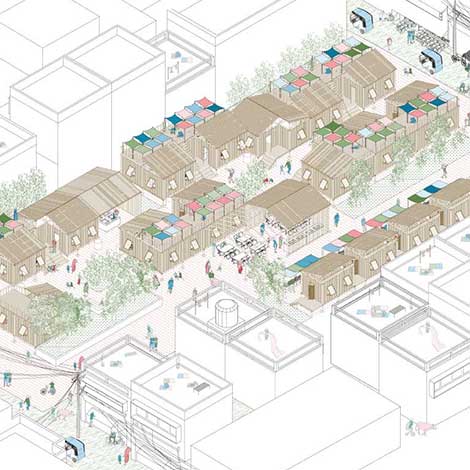
Shelter Design for Homeless Migrant Workers in Jaipur // Zhilu Wang
Zhilu Wang // Fall 2020. In India, as one of the by-products of rapid urbanization, homelessness is a growing urban issue that the poorest urban dwellers are vulnerable to experiencing. Most of the homeless are migrant workers who flow into big cities in search of labor opportunities, but many of end up being homeless because they couldn’t make ends meet. Their life gets even harder during extreme weather in monsoon seasons. Taking inspiration from social research and local programs, this project proposes a new network of shelter operation system where governments, NGOs and the public can work together to establish and manage the shelters. Sites for the shelters will be vacant spaces that near healthcare institutions, public food shelters, and commercial and market areas. The specific strategy for the shelter will be module design with bamboo, which can be easily constructed and flexibly applied in other sites. Based on the basic need of the homeless, the shelter will have various programs, with which it will not only serve as a place for sleeping but can also become a potential source of job creation, functioning as a first-step solution in response to persistent homelessness. In this way, the project also endeavors to address a sense of belonging and restore dignity.
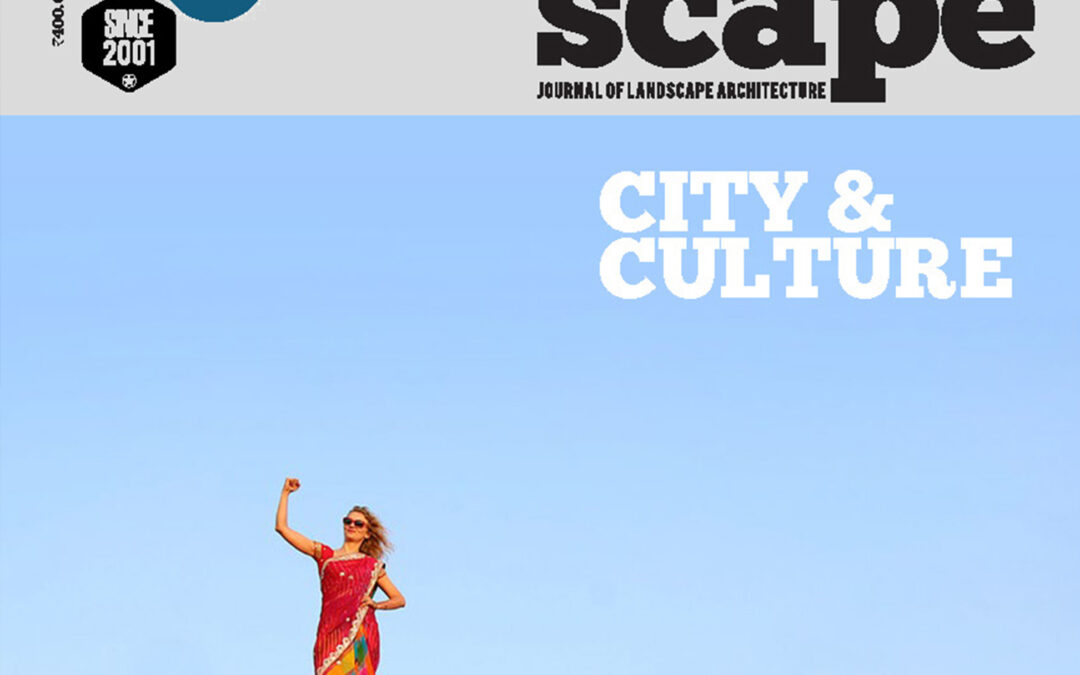
YRP Book Review in the Journal of Landscape Architecture, India
Excerpt from YRP Book Review in the Journal of Landscape Architecture in India: "... In A Vision for Delhi, the infrastructure study becomes part of a design brief to envision and conceptualize possibilities to counter related issues. Imagined in carefully identified...
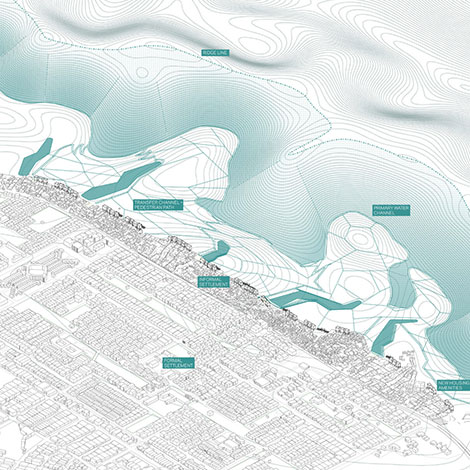
The Green Belt: Mountain Edge // Andrew Porten, Thea Spring
The Rajasthan Cities Project. Fall 2019, Andrew Porten and Thea Spring.
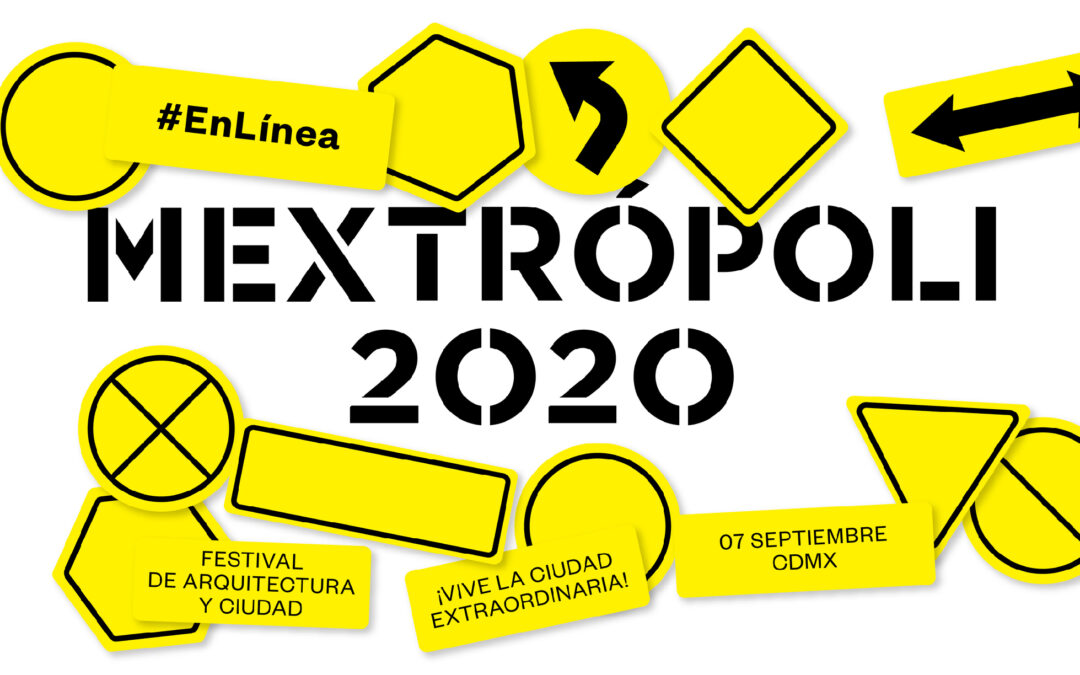
Iñaki Alday Speaks at Mextrópoli 2020
Mextrópoli 2020, an architecture festival in Mexico City, was entitled (Un)sustainable City. The relationship between urban planning and architectural design with the conditions imposed by the climate crisis was at the center of the festival programme.
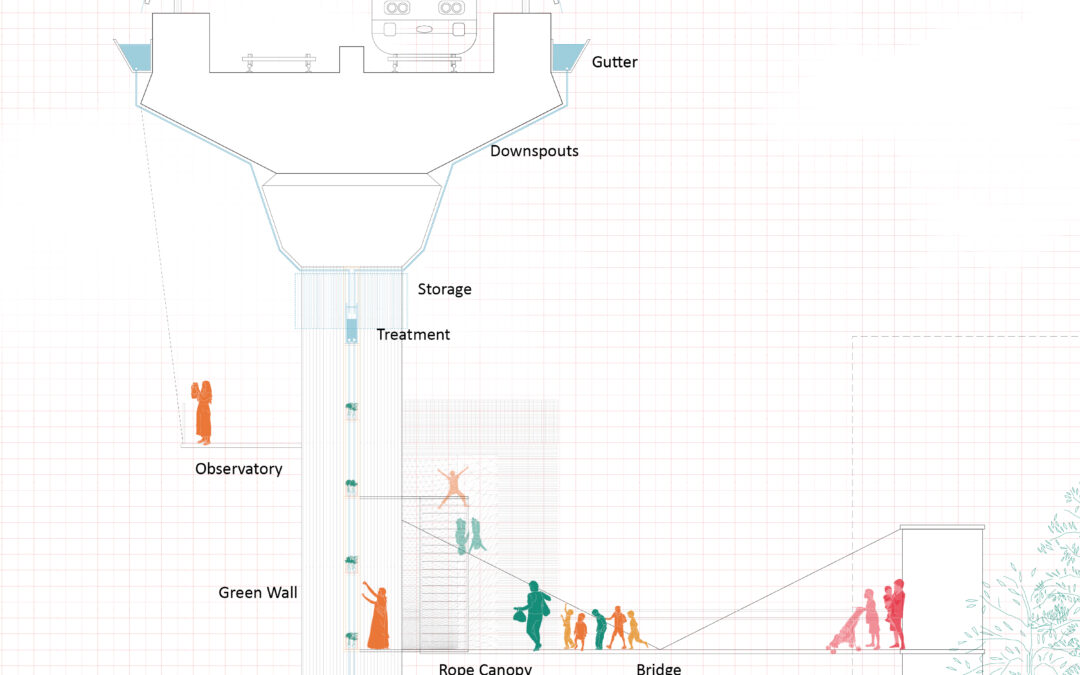
Under The Elevated // Yijie Gui & Yixuan Li
The project we worked through the semester starts from the research of the scale and condition of the current metro line in Jaipur, as well as the surrounding areas.The elevated metro line is a project done by the Jaipur Metro Railway Corporation. It was a huge...

Public Transversal Axis // Jiayong Li
This project proposes a comprehensive traffic axis which benefits both local communities and tourists in Jaipur.This scheme diagram shows the structure of a North-South axis built by metro and cable car systems, and several rapid bus routes to connect the west and...
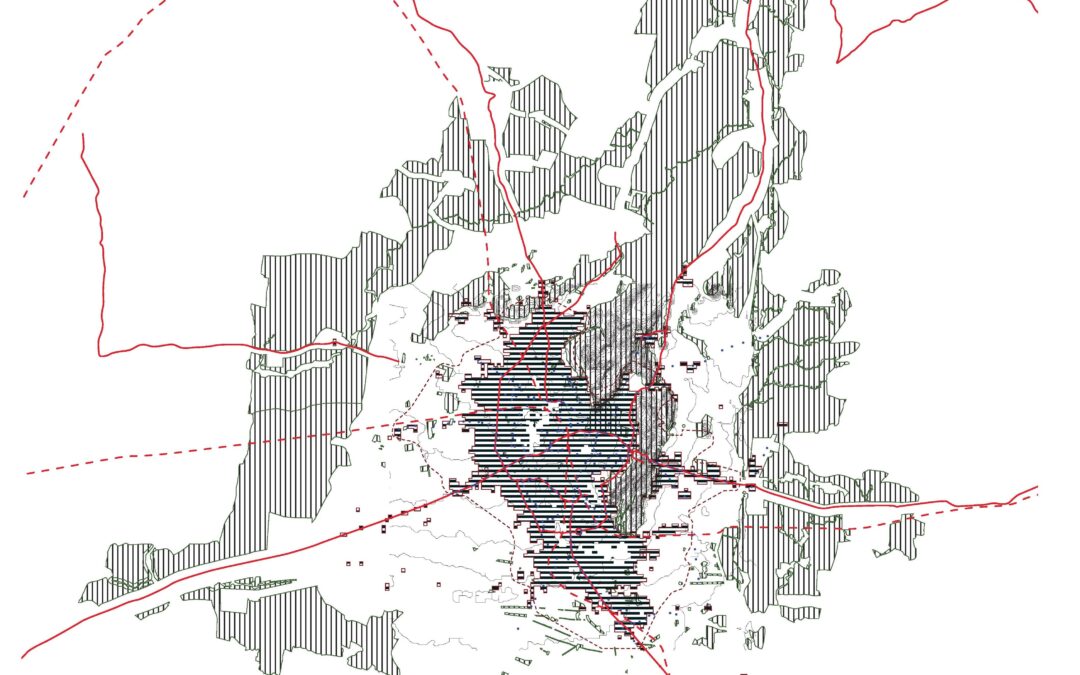
Prototype Implementation in Bindayaka // Belinda Chau
The peri-urban community hub prototype represents a magnetic force that serves the people from the Bindayaka community but also attracts people from the adjacent rural area to get primary essential services and people from the urban city center of Jaipur to come and...
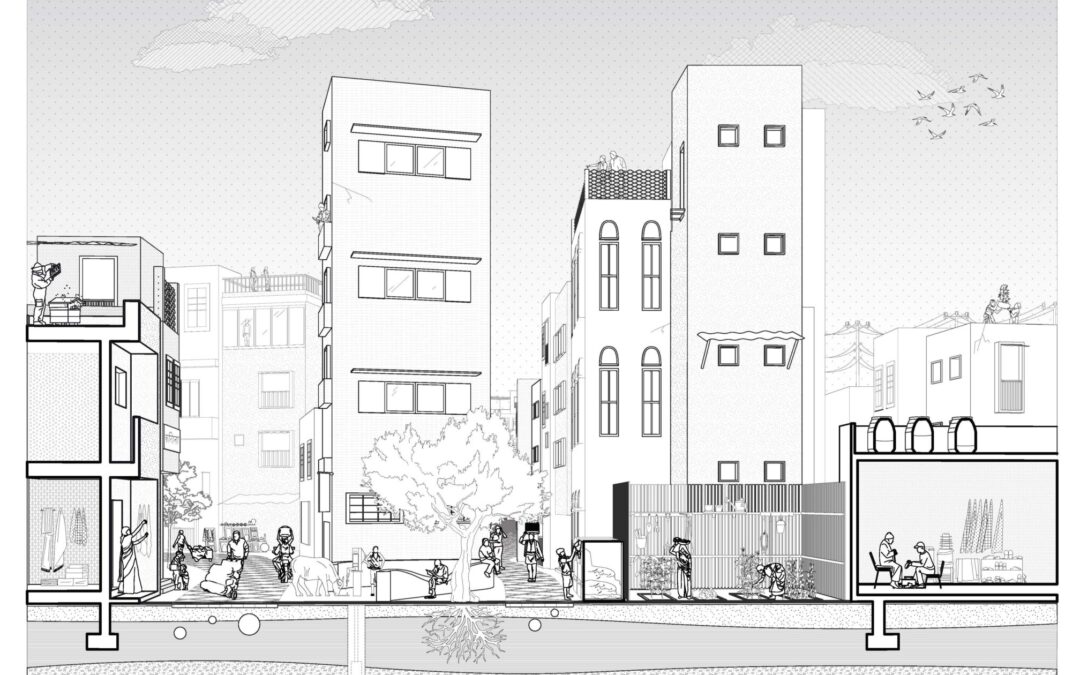
Reinvigoration Of Jaipur’s Urban Fabric // Hayley Burroughs
This study began as an examination of the variety of socioeconomic statuses found within Jaipur and was further conducted with the hope of revealing inequities in access to resources plus issues related to privilege, power and control. Careful consideration was given...
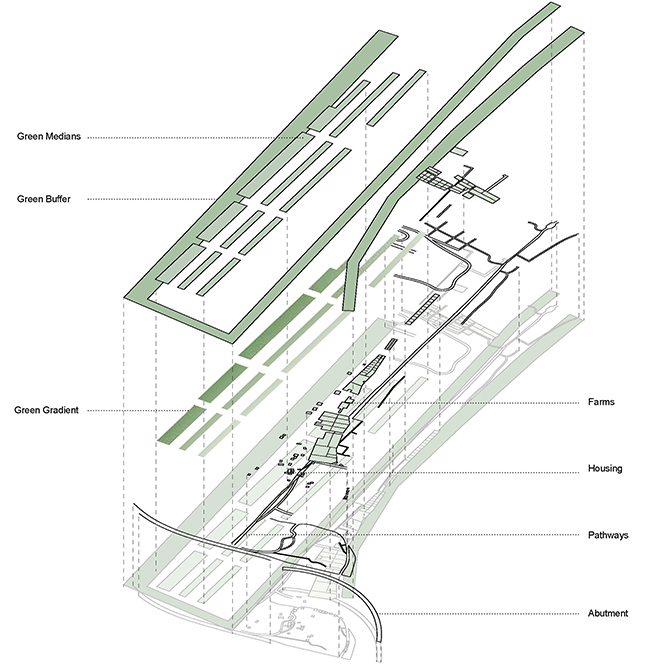
Recovery of brown fields in the floodplain with waste zero // Danielle Sheeringa
The project proposes to remediate the Millennium Bus Depot, a 51-acre concrete brown field on the Yamuna flood plain built for the Commonwealth Games in 2010 and now in the process of being phased out. The depot is fenced in by major highways, railroads, a polluted...

Democratization of Luytens Delhi : The Intersections // Xia Li
In New Delhi’s unique urban plan by Edwin Lutyen’s for the political center, modulated in hexagons or triangles, the intersections are treated as traffic roundabouts, resulting in disconnected and underutilized islands with manicured gardens. This network of 24...

Recovery of the Najafgarh Drain as public space // Sean Tichenor
To return to a Delhi which has an intimate relationship with its water systems, where do we start? Lessons of urban theory tell us that large, state controlled, centralized projects may not be appropriate in this case. The channelization of the Najafgarh, in fact,...
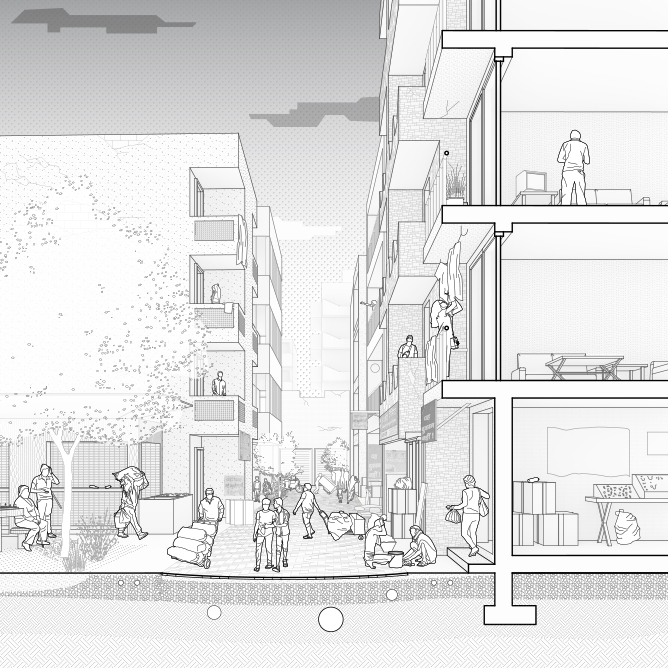
Introduction of Infrastructures and Public amenities in Nilothi // Elliot Moreau
The neighborhood of Nilothi began as an agricultural settlement that has grown to become an informal neighborhood in Western Delhi and has now become one of the densest areas in the city. The population is projected to double in the coming decade. The neighborhood...
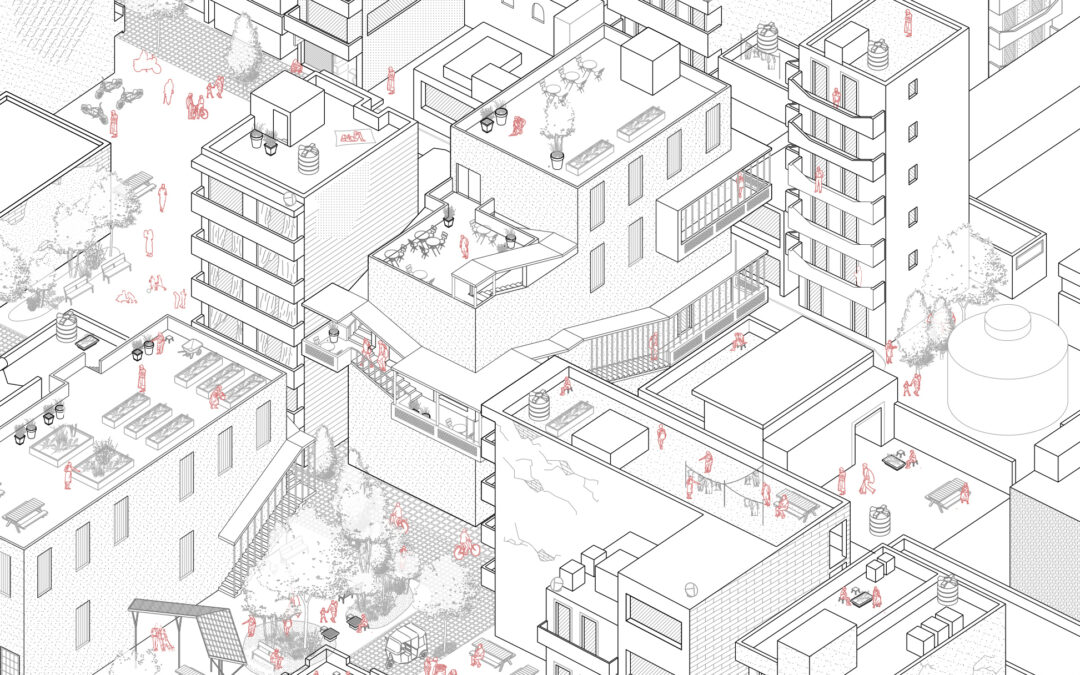
Spring 2021 Research Presentations
Spring 2021 Research Project Presentation May 05, 2021 | NewsThe YRP Research Project Presentation the Spring 2021 semester was held at the Tulane School of Architecture on Monday, May10th from 8.30 am to 3.30 pm CDT via Zoom and Concept Board. The review...
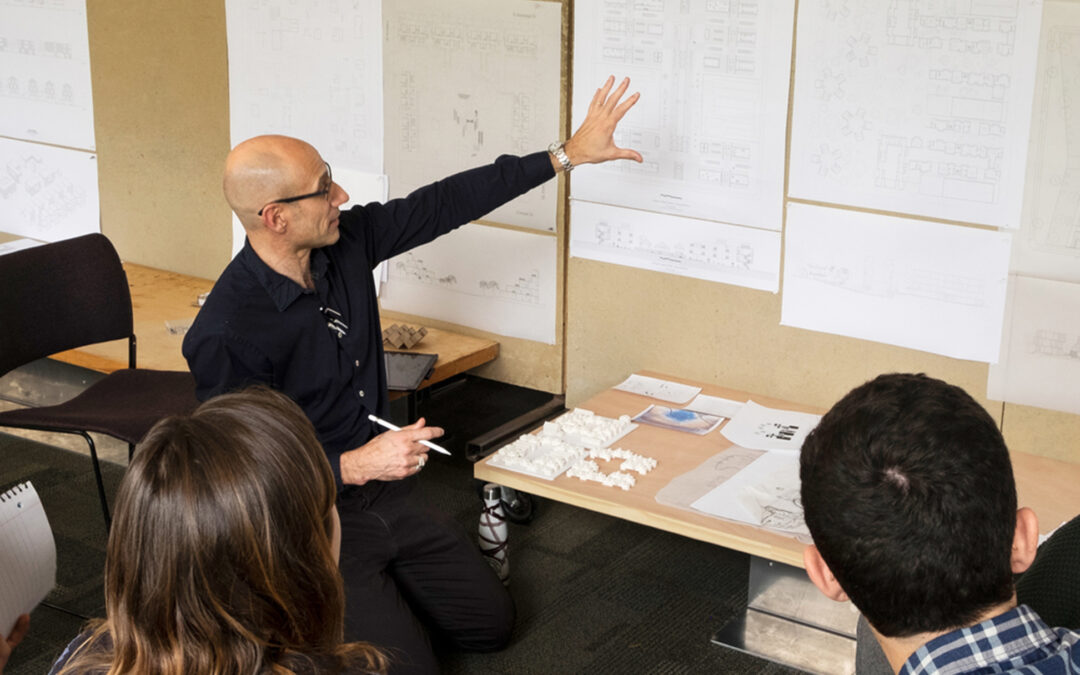
Inaki Alday on the Climate Crisis: “The Planet is At the Limit of Collapse”
Read the full interview here. Excerpt from Iñaki Alday's interview on ArchDaily by Fabian Dejtiar: First, start by rethinking our footprint. In this sense, we have to stop expansion that generates more impermeable soil, forces more displacements, and increases the...
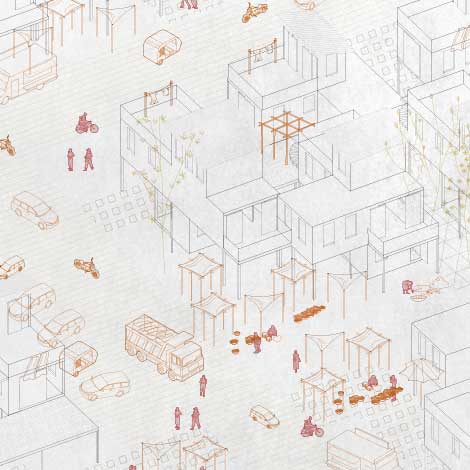
Home-Made: Connecting Local Artisans + Tourists in Historic Jaipur // Genesis Rodgers
Genesis Rodgers // Fall 2020. The manufacturing sector is the second-largest employer for residents in Jaipur, Rasjasthan, India. MY research found that traditional handicraft manufacturers are challenged by long production supply chains. Simultaneously, Jaipur’s numerous historic landmarks and shopping bazaars attract an increasing number of seasonal tourists, which is the largest source of revenue for the city’s economy. Local manufacturers and tourists become key stakeholders here. The project serves to optimize handicraft commerce by centralizing production, market exchange, and housing in the same place for artisans and their families. An urban strategy with six outdoor spaces types creates a three-dimensional matrix of public and private layers. An activated ground floor, semi-public mid-floor work courts, and extra production areas on the roof compose this interactive + productive housing community. A pedestrian pathway guides tourists explore the site and shop for handicrafts displayed on large swing-doors, or peer in to ask a question, take a picture. In this way, the architecture celebrates a return to authentic traditions, cultural experiences, [micro]economic empowerment, and domestic stability for a densely urban Jaipur.
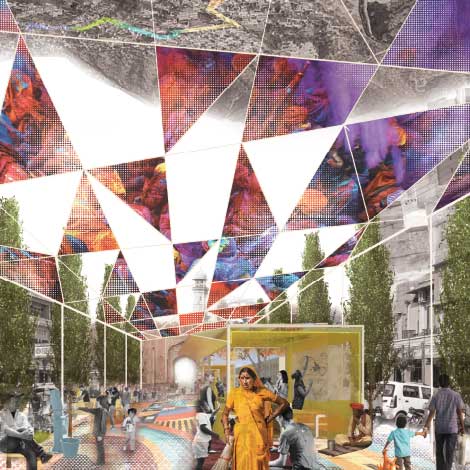
A Reconnected Urban Fabric // Alejandro Di Napoli + Emily Zekany
Alejandro Di Napoli + Emily Zekany // Fall 2020. Re-imagining the typological streetscapes of Jaipur through a series of small-scale interventions that aggregate to form a larger collective…In India, the city street can be considered an URBAN COMMONS—a place where people buy, sell, socialize, congregate, celebrate, and rest. Here the boundaries between work and home, public and private, formal and informal are blurred. How can we celebrate the natural vibrancy of Jaipur with a proposal for a new urban corridor that stitches together the urban fabric of the city while providing an informal hierarchical organization of space? This proposal establishes a series of low-tech interventions that can be prototyped & implemented to aggregate into a larger processional corridor experience, while capturing, amplifying, celebrating, & formalizing all the vibrant qualities of India’s streets. This project also establishes a collective sense of agency and ownership of the city at large.
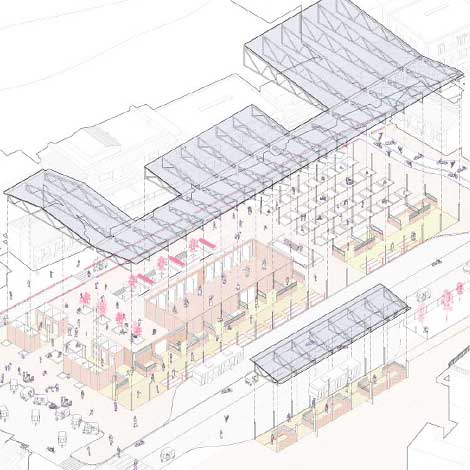
A Connective Tissue for All: Public Transportation System Design for the Slum Area in Jaipur // Tommy Xia
Chenyang Xia // Fall 2020. The Connective Tissue for All projects aims at establishing prototypical bus station models for safer transit experience and integration between theslumneighborhoods alongAravali Hills in Jaipur. The synergies of sites would provide convenient access to basic amenity services, with a few serving as major community spaces. The design would feature steel framed structures with cross ventilation on the East-West side, and rain pipes for monsoon seasons along with on-site water collection systems. The transit area will feature a linear order with elevated waiting and seating area, covered by steel roofs duringboarding experiences, while other services are connected to it as wings, such as public toilets and market stalls,thatare primarily for local residents. Multiple trafficways and parking areas are designated for better mobility access. The bus stations would then serve as the connective tissue between local residents and transit users, as well as the slum neighborhood and the whole city of Jaipur.
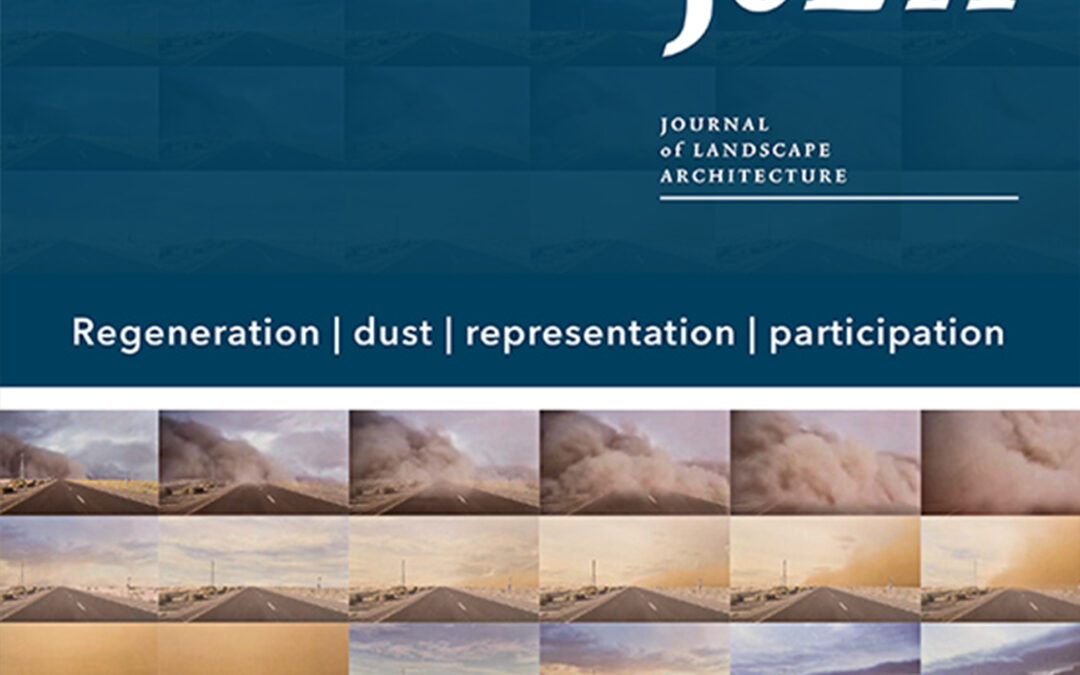
YRP Book Review in Journal of Landscape Architecture
Excerpt from YRP Book Review in (JoLA) Journal of Landscape Architecture: "Worldwide, contemporary urbanization highlights a clear departure from cities' intimate ties to the very landscapes that gave rise to them. Centuries of dependence, appreciation and...

Water Safety: Water Harvesting // Casey Last, Evan Warder
The Rajasthan Cities Project. Fall 2019, Casey Last and Evan Warder.
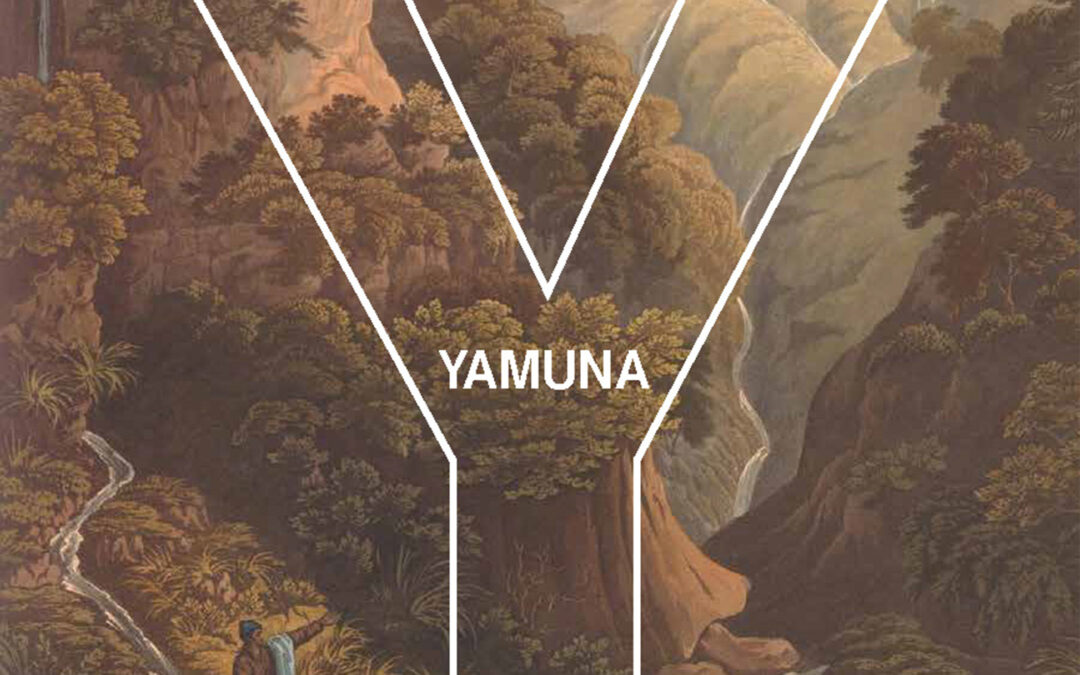
Pankaj Vir Gupta guest edits March issue of Motherland
YRP Co-Director Pankaj Vir Gupta was invited to be the guest editor for an issue of Motherland - a theme-based journal of thoughts, ideas, and unexpected narratives on India. Exploring the trends, subcultures, and issues shaping the country, the magazine provides a...
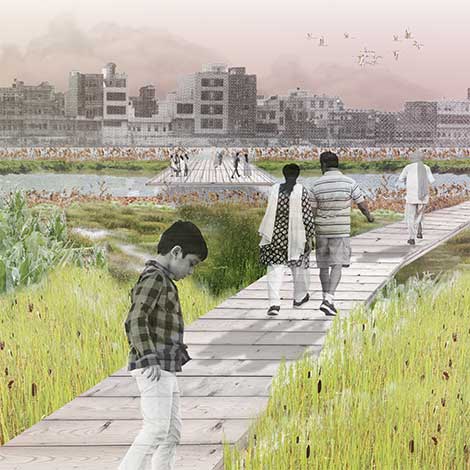
Tal Katora Transformation: Renewing Jaipur’s Historic Resevoir // Chloe Nagraj
This proposal uses the renewal of Tal Katora, Jaipur's historic resevoir, as a vehicle to address the larger urban systems of solid waste, sewage, and stormwater management. Rapid urbanization over the course of the past three decades has caused the water conveyance...





